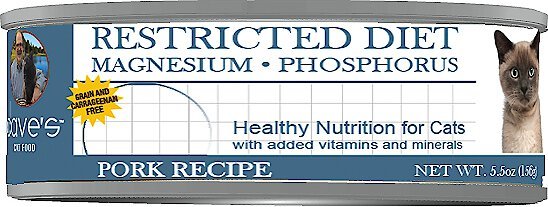Friskies Seafood Sensations Adult Salmon, Tuna and Shrimp Recipe Dry Cat Food
Pour a purr-worthy dish full of yum with Purina Friskies Seafood Sensations dry cat food. Salmon, tuna and shrimp flavors combine to create a taste she’ll love, and a touch of seaweed flavor balances out the recipe for delicious goodness. Essential vitamins and minerals in every serving let you feel good about offering this dry cat food to your feline friend, and the seafood flavors give her plenty of reasons to finish every last delectable bite. Each serving contains 100% complete and balanced nutrition for every stage of life, so your cat can enjoy this scrumptious recipe from her playful kitten days all the way through her adventurous adult years. Let the sound of the delightful bites hitting her bowl send her prancing your way, and watch as she savors every bit of the ocean flavors. with so much goodness in every serving, she’s sure to meow for more at mealtime.
Pour a purr-worthy dish full of yum with Purina Friskies Seafood Sensations dry cat food. Salmon, tuna and shrimp flavors combine to create a taste she’ll love, and a touch of seaweed flavor balances out the recipe for delicious goodness. Essential vitamins and minerals in every serving let you feel good about offering this dry cat food to your feline friend, and the seafood flavors give her plenty of reasons to finish every last delectable bite. Each serving contains 100% complete and balanced nutrition for every stage of life, so your cat can enjoy this scrumptious recipe from her playful kitten days all the way through her adventurous adult years. Let the sound of the delightful bites hitting her bowl send her prancing your way, and watch as she savors every bit of the ocean flavors. with so much goodness in every serving, she’s sure to meow for more at mealtime.
- Seafood flavors for the taste cats love
- 100% complete and balanced nutrition for all life stages
- Contains protein to support strong muscles
- Tempting texture to please her palate
- Essential fatty acids to help support healthy skin and coat
- Vitamin A and taurine to help support clear, healthy vision
- Formulated to meet industry standards for cat food
Additional information
| Country of Origin | Made in USA |
|---|---|
| Breed Size | Extra Small, Small, Medium, Large, Extra Large |
| Flavor | Salmon, Tuna and Shrimp |
| Health Features | Muscle Health, Vision Health, Skin & Coat Health |
| Indoor/Outdoor | Indoor and Outdoor |
| Life Stage | Adult |
| Primary Flavor | Shrimp, Tuna, Salmon |
| Packaged Height | 24 in. |
| Packaged Length | 4.5 in. |
| Packaged Width | 18.25 in. |
| Manufacturer Part Number | 5000096358 |












by Beth
My cats like this a little too much. Catch them sneaking in the bag, all the time.
by Morris
Cats really go for this food.
by Christina
Purina Friskies Tender & Crunchy Combo Cat Food: The minute my cats hear the crinkle of this bag of food they come running. I have 2 senior cats and 2 ma-purring (maturing) kittens, they refuse to eat anything else but purina frisky’s tender and crunchy cat food. I love the packaging because it is very bright and colorful and displays many photos of tasteful appetizing ingredients. My cats, I believe, love that there are tender bits in their food, it’s as if they’re eating there morning treats. I would highly recommend this tasty cat food, all of my cats love it and it is really hard to find something that they all agree on.
by Yumm
My cats (even my 2 dogs) love the taste and I especially love that it comes in the 30# bag.
by Torres
My cat really like it and it’s a good value for my dollars.